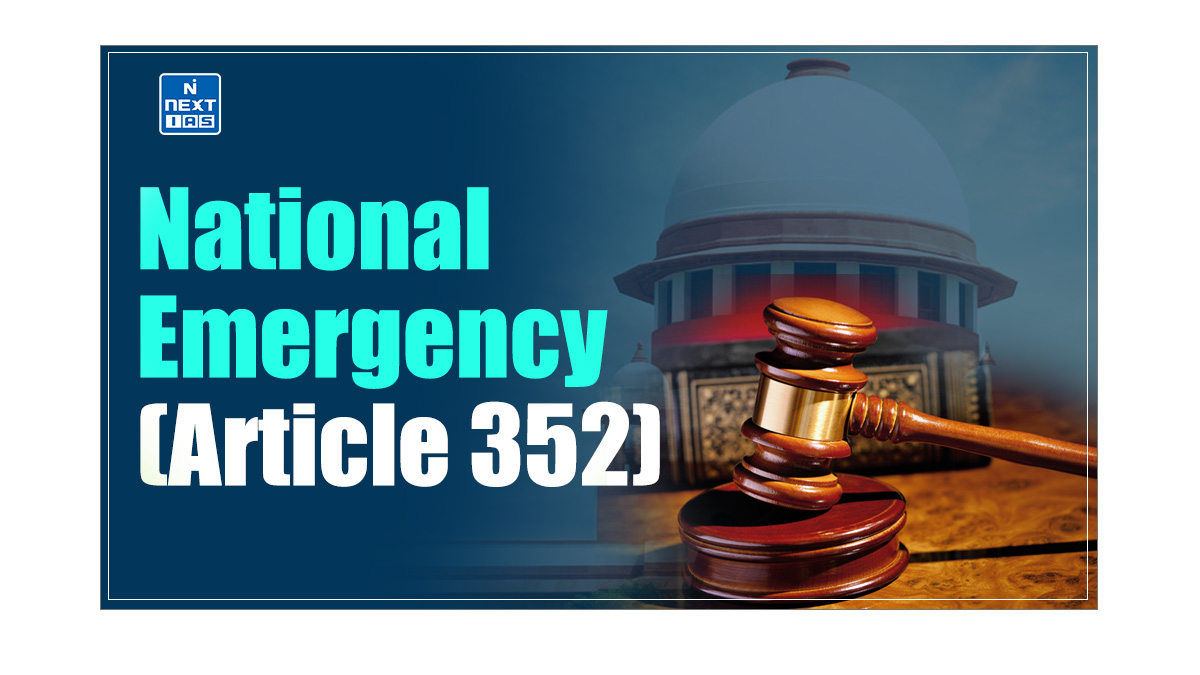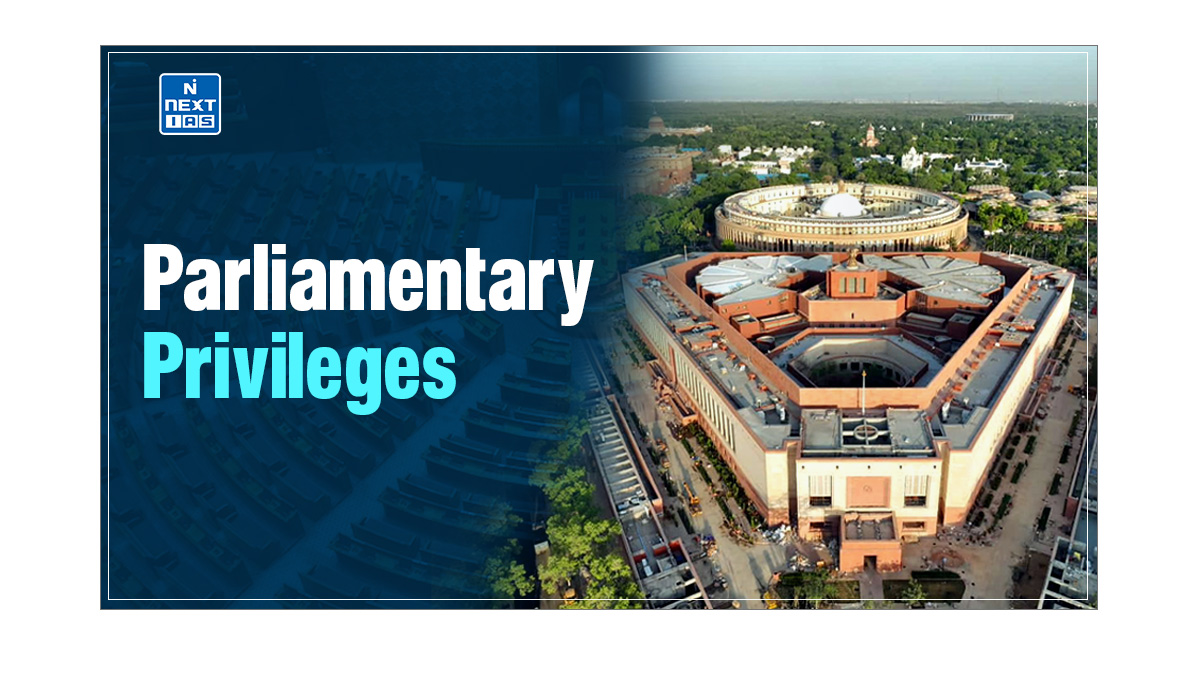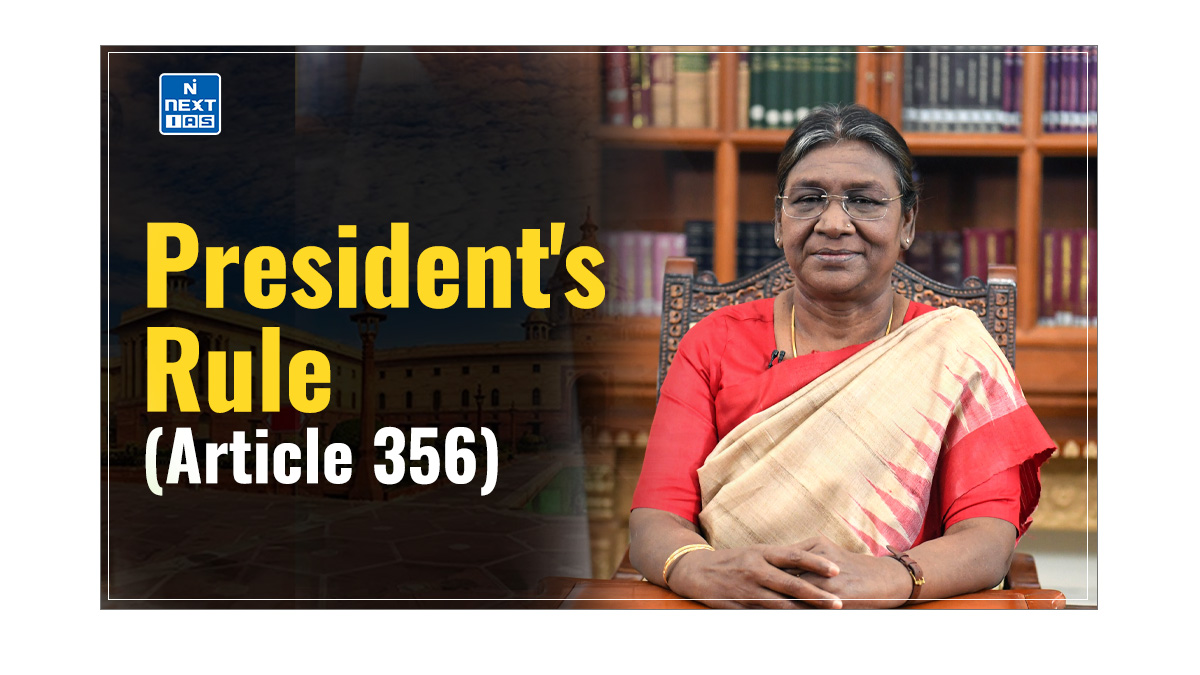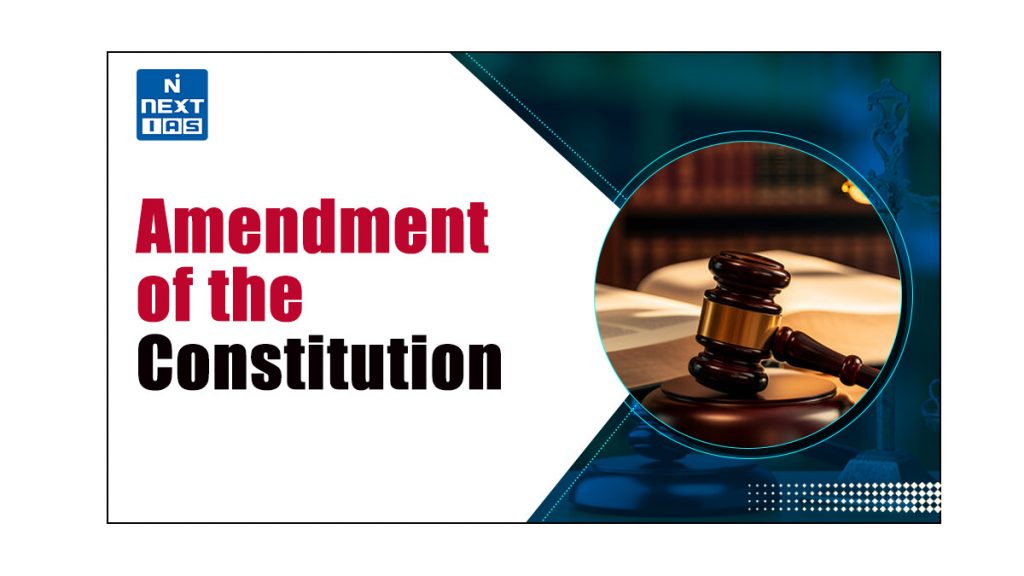
The Constitution of India, as the supreme law of the land, should be responsive to changing needs and situations. The provision for amendment of the Constitution of India under Article 368 accommodates this requirement. This article aims to explain the meaning of the amendment of the Constitution, its procedure, types, significance, limitations, and more.
Meaning of the Amendment of the Constitution
The Amendment of the Constitution refers to the process of making changes such as the addition, variation, or repeal of any provision of the Constitution in accordance with the procedure laid down for the purpose. The purpose of Constitutional Amendments is to ensure that the Constitution remains a living document capable of adapting to changing circumstances while upholding its fundamental principles and values.
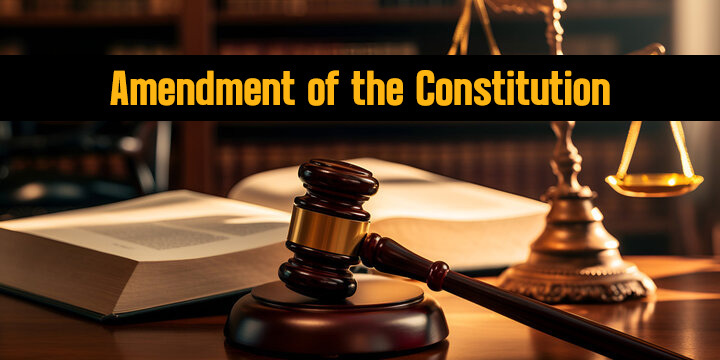
Provisions of Amendment of Indian Constitution
The Indian Constitution, being a living document, provides for its amendment. The detailed provisions regarding the Amendment of the Constitution of India are contained in Article 368 in Part XX of the Indian Constitution. These provisions define the process and scope of amending the Constitution.
Various aspects of the Amendment of the Constitution of India are dealt with in detail in the sections that follow.
Procedure for Indian Constitution Amendment
- The procedure for the Amendment of the Constitution of India as per Article 368 is as follows:
- A bill for the amendment of the Constitution can be introduced only in either house of the Parliament, not in the State Legislatures.
- The bill can be introduced either by a minister or by a private member and does not require prior permission of the President.
- The bill must be passed in each House by a Special Majority, that is, a majority (more than 50 percent) of the total membership of the House and a majority of two-thirds of the members of the House present and voting.
- Each House must pass the bill separately. In case of a disagreement between the two Houses, there is no provision for holding a joint sitting of the two Houses for deliberation and passage of the bill.
- If the bill seeks to amend the federal provisions of the Constitution, it must also be ratified by the legislatures of half of the states by a Simple Majority, that is, a majority of the members of the House present and voting.
- After duly passed by both Houses of Parliament and ratified by the State Legislatures, where necessary, the bill is presented to the President for his/her assent.
- The President must give his assent to the bill. He can neither withhold his assent to the bill nor return the bill for reconsideration by the Parliament.
- After the President’s assent, the bill becomes an Act (i.e. a Constitutional Amendment Act), and the Constitution stands amended as per the changes made by the Act.
Types of Amendments in Indian Constitution
The total amendments in the Indian Constitution is to address evolving political, social, and economic needs, ensuring the Constitution remains dynamic and relevant.
- Article 368 of Indian Constitution provides for two types of amendments:
- By a Special Majority of Parliament (50% of the total membership of the House + 2/3rd of the members present and voting),
- By a Special Majority of Parliament plus ratification of 1/2 of the states by a Simple Majority,
- One other type of amendment can be done by a Simple Majority of Parliament.
- However, these amendments are not deemed to be amendments for the purpose of Article 368.
- Therefore, the Constitution can be amended in three ways:
- Amendment by a simple majority of the Parliament,
- Amendment by a special majority of the Parliament, and
- Amendment by a special majority of the Parliament and the ratification of half of the State Legislatures.
- The process and scope of each type of amendment are discussed in detail below.
By Simple Majority of Parliament
- Several provisions in the Indian Constitution can be amended by a Simple Majority i.e. 50 percent of members present and voting.
- It is to be noted that these amendments fall outside the scope of Article 368.
- A few examples of the provisions that can be amended by simple majority are:
- Admission or establishment of new states,
- Formation of new states and alteration of areas, boundaries, or names of existing states,
- Abolition or creation of Legislative Councils in states, etc.
By Special Majority of Parliament
- The majority of the provisions in the Constitution can be amended only by a Special Majority (more than 50 percent of the total membership of the House and a majority of two-thirds of the members of that House present and voting).
- The provisions that can be amended by Special Majority are:
- Fundamental Rights,
- Directive Principles of State Policy,
- All other provisions that are not covered by the first and third categories.
By Special Majority of the Parliament and Consent of Half States
- The provisions of the Constitution that are related to the federal structure of the Indian polity require for their amendment a Special Majority of the Parliament along with the consent of half of the state legislatures by a Simple Majority.
- The following points are to be noted w.r.t. these types of amendments:
- It does not require that all the states give their consent to the bill. The moment half of the states give their consent, the formality is completed and the bill is passed.
- The constitution has not prescribed any time limit within which the states should give their consent to the bill.
- A few examples of the provisions that can be amended this way are:
- Election of the President and its manner,
- Extent of the executive power of the Union and the States,
- Provisions related to the Supreme Court and High courts, etc.

Basic Structure of the Constitution
- The Basic Structure of the Indian Constitution refers to a set of core principles deemed essential, which cannot be destroyed or altered through amendments by the Parliament. This concept, though not explicitly mentioned in the Constitution, was established by the Supreme Court in the landmark Kesavananda Bharati case (1973).
- The Doctrine of Basic Structure is a check on the amending power of the Parliament and ensures that the fundamental ethos, principles, and the underlying framework of the Constitution remain intact, preserving its spirit.
Significance of the Constitutional Amendment
The provision for amendment of the Indian Constitution carries multifarious significance as listed below:
- Adaptability in Governance: The Constitution lays down fundamental principles of governance. A diverse and constantly evolving country like India cannot be governed by a set of fixed rules. The amendment of the constitution enables to bring changes in governance as per needs and situations.
- Accommodating New Rights: With rising awareness, various sections of society are becoming assertive of their rights. For example, of late, the LGBT community has been demanding their rights. The amendment enables providing for such rights.
- Evolution of New Rights: New interpretations of the Constitution led to the evolution of new rights. For example, a new interpretation of the Right to Life and Personal Liberty gave rise to the Right to Privacy. The amendment enables accommodating such rights.
- Addressing Emerging Issues: It enables addressing new emerging trends like bans, vigilantism, etc.
- Bringing Social Reform: It enables the eradication of outdated socio-cultural practices to usher in modernity.
Criticism of the Amendment Procedure
The procedure for amendment of the Indian constitution has been criticized on the following grounds:
- There is no provision for a special body for amending the Constitution such as the Constitutional Convention or Constitutional Assembly. The constituent power is vested in the Legislative Body itself i.e. the Parliament and the State Legislatures (in a few cases).
- There is no provision for a special process for amending the Constitution. Except for the requirement of Special Majority, the process of amendment is similar to that of a legislative process.
- The power to initiate an amendment lies only with the Parliament. The states have no such powers (except for passing a resolution to create or abolish state legislative councils).
- A major part of the Constitution can be amended by the Parliament alone. Only in a few cases, the consent of the state legislatures is required, and that too, only half of them.
- Lack of provision for holding a joint sitting of both Houses of Parliament for a constitutional amendment bill, sometimes, leads to the situation of a deadlock.
- The provisions relating to the amendment procedure, being too sketchy, leave a wide scope for creating disputes and taking the matters to the judiciary.
The process of amendment of the constitution is a crucial aspect of maintaining the relevance and adaptability of India’s legal framework to changing societal needs and circumstances. These amendments of the constitution have played a significant role in shaping the country’s governance and legal framework. It ensures that the Constitution remains a living document, reflective of its people’s aspirations, challenges, and evolving societal values, ensuring its relevance and efficacy for generations to come.
Important Amendments in the Indian Constitution
| Amendments | Provisions |
|---|---|
| 1st Amendment Act of 1951 | It added the Ninth Schedule of the Constitution which includes a list of Central and State laws that cannot be challenged in courts. |
| 42nd Amendment Act of 1976 | – Three terms (i.e., socialist, secular, and integrity) were added in the Preamble. – It added Fundamental Duties (new Part IVA) in the Constitution. |
| 44th Amendment Act of 1978 | – It replaced the term ‘internal disturbance’ with ‘armed rebellion’ which was related to National Emergency (Article 352). – It deleted the Right to Property from the Fundamental Rights and made it a legal right. |
| 61st Amendment Act of 1988 | It lowered the voting age from 21 years to 18 years. |
| 73rd Amendment Act of 1992 | It introduced the provisions related to Panchayati Raj Institutions, aiming to decentralize power to the grassroots level. |
| 74th Amendment Act of 1992 | It introduced the provisions related to Urban Local Bodies, empowering Municipalities and Municipal Corporations. |
| 86th Amendment Act of 2002 | It added that the State shall provide free and compulsory education to all children aged six to fourteen years. |
| 97th Amendment Act of 2011 | This amendment gave constitutional status and protection to the cooperative societies. |
| 101st Amendment Act of 2016 | It introduced the Goods and Services Tax (GST), a comprehensive indirect tax reform aimed at simplifying the tax structure and promoting economic integration. |
| 102nd Amendment Act of 2018 | It gave Constitutional Status to National Commission for the Backward Classes. |
| 103rd Amendment Act of 2019 | It provides 10% reservation for Economically Weaker Sections (EWS). |
| 104th Amendment Act of 2020 | It provides for the reservation of seats in the Lok Sabha and State Legislative Assemblies for members of Scheduled Castes and Scheduled Tribes till 25th January 2030. |
| 105th Amendment Act of 2021 | It revived the power of the State Governments to identify Socially and Educationally Backward Classes (SEBCs). |
| 106th Amendment Act of 2023 | It reserves one-third of all seats for women in Lok Sabha, State Legislative Assemblies, and the Legislative Assembly of the National Capital Territory of Delhi, including those reserved for SCs and STs. |
Frequently Asked Questions (FAQs)
What is a Constitutional Amendment?
The Constitutional Amendment refers to the process of making changes such as the addition, variation, or repeal of any provision of the Constitution in accordance with the procedure laid down for the purpose.
Who has the power to amend the Constitution?
The Parliament alone has the power to amend the Constitution.
What is Simple Majority?
A Simple Majority refers to a majority of more than 50% of the members present and voting in the House.
What is Special Majority?
As per Article 368, Special Majority refers to the majority of 50% of the total strength of the House and a majority of 2/3rd of the members present and voting in the House.
What is Absolute Majority?
Absolute Majority refers to the majority of more than 50% of the total membership of the House.
What is Effective Majority?
It refers to the majority of more than 50% of the effective strength of the house which does not include the vacant seats of the total strength of the House.
What is Article 368?
Article 368 of the Indian Constitution pertains to the procedure for amending the Constitution of India.
Which part of the Constitution deals with amendment?
Article 368 of Part XX deals with the Amendment Procedure of the Indian Constitution.
Can Article 32 be amended?
Article 32 can be amended like any other provision of the Constitution without affecting the Basic Structure established by the Supreme Court of India in the landmark case of Kesavananda Bharati vs. the State of Kerala Case (1973).
How many times was the Preamble of the Constitution amended?
The Preamble of the Indian Constitution has been amended only once so far.
What is the latest amendment in the Indian Constitution?
The latest amendment in the Indian Constitution was the 106th Amendment Act, passed in 2023.
What is an amendment in the Constitution?
An amendment is a formal change or addition made to the Constitution to address evolving needs or correct existing provisions.
Can the state legislature initiate the constitutional amendment process?
No, only the Parliament can initiate the constitutional amendment process in India.
Which article of the Indian Constitution deals with the amendment procedure?
Article 368 of the Indian Constitution deals with the amendment procedure.
